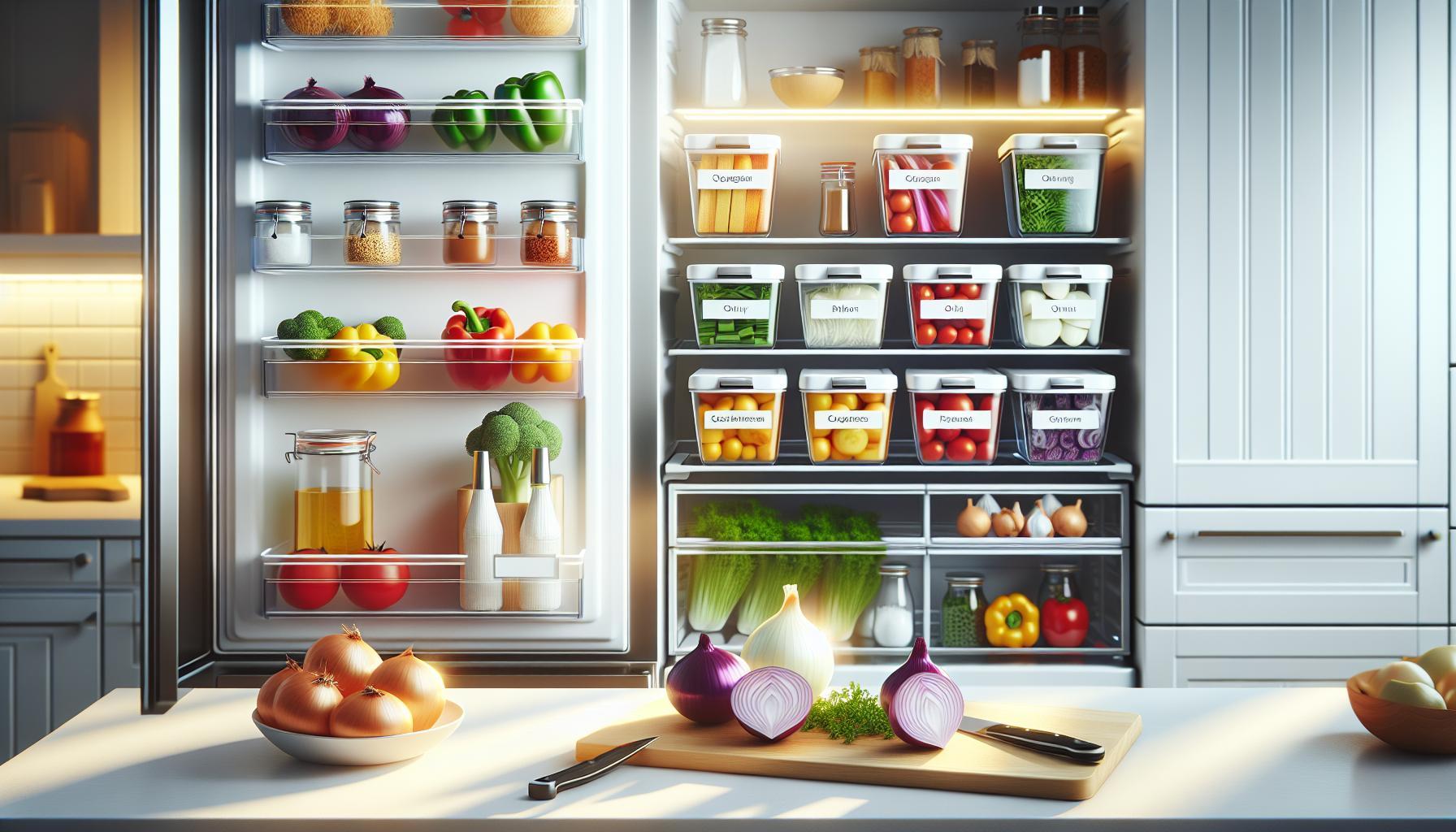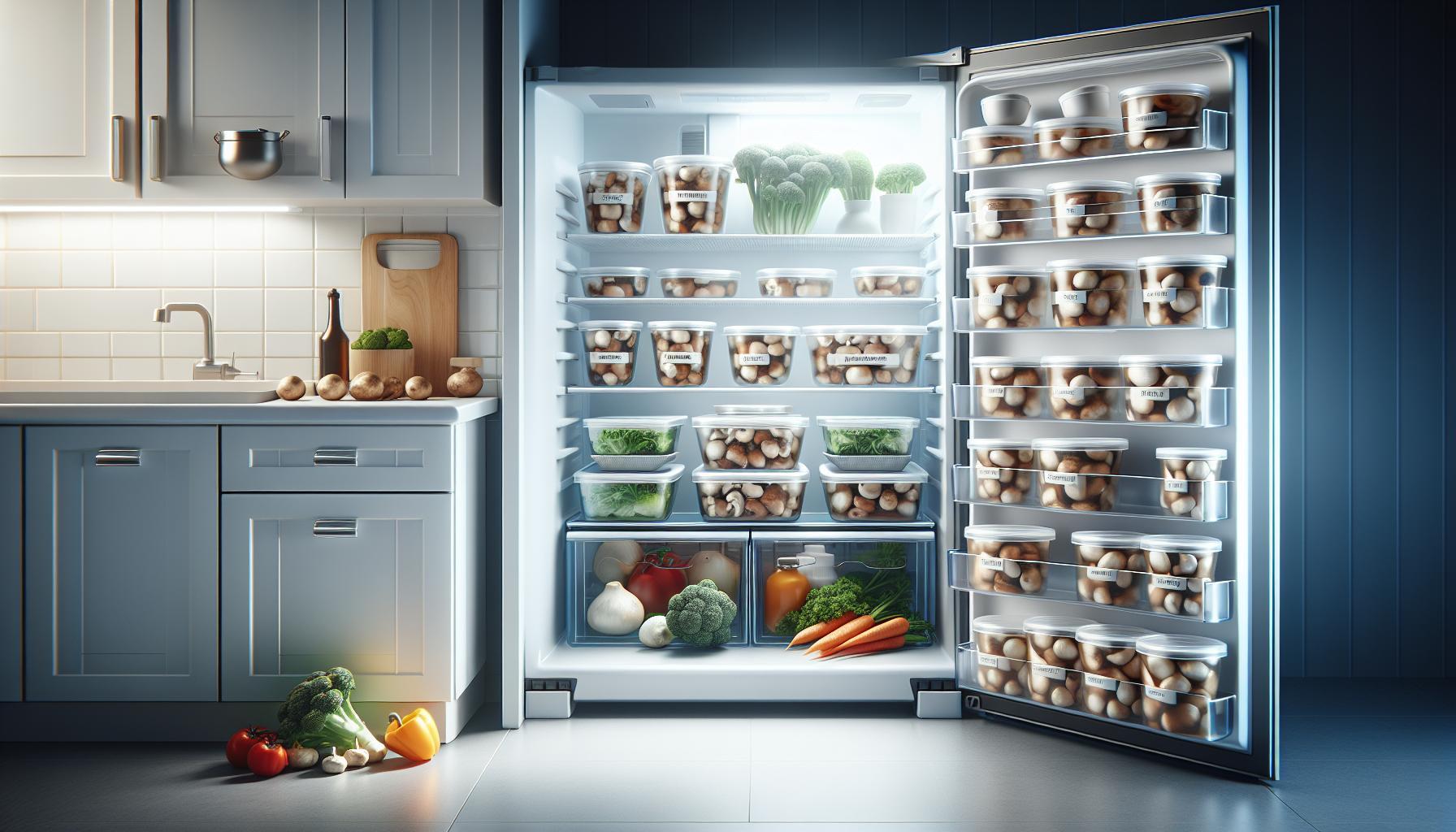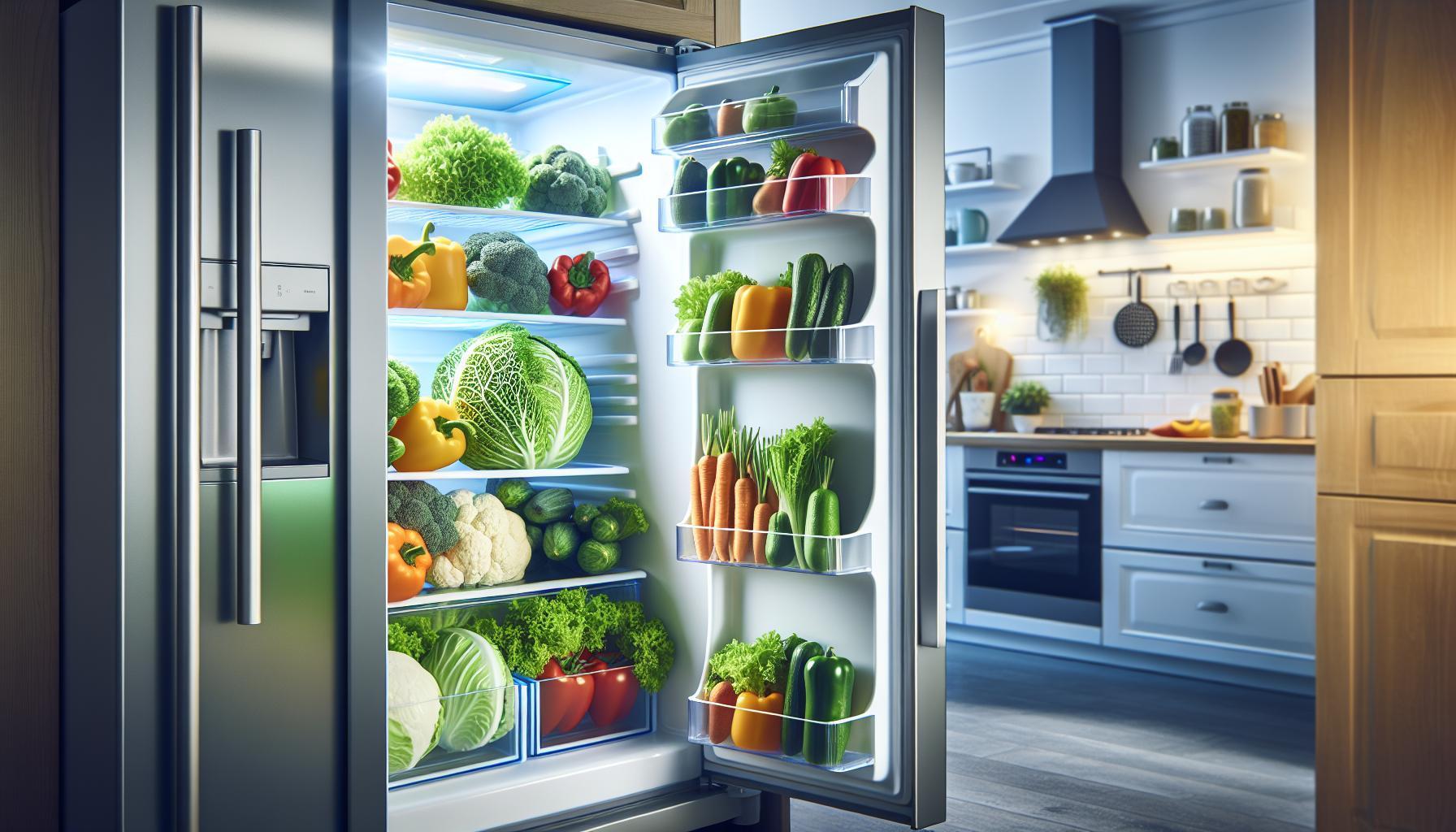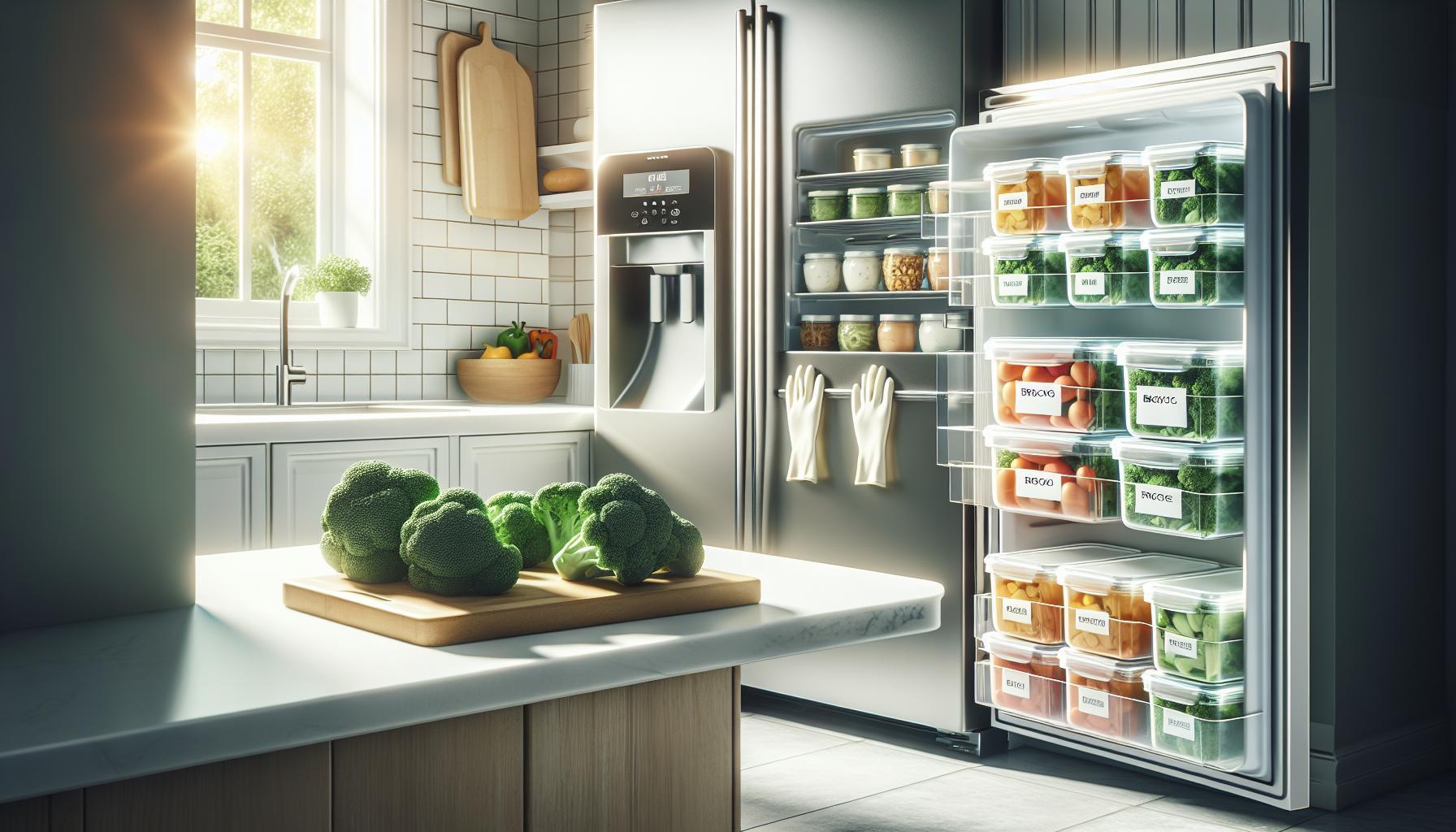Vegetable soup is a nutritious staple in many kitchens, packed with vitamins and flavor. However, many home cooks often wonder: how long does it really last in the fridge? Understanding the shelf life of vegetable soup is crucial for food safety and minimizing waste.
Improper storage can lead to spoilage, which not only affects the taste but can also pose health risks. By mastering the art of storing vegetable soup correctly, you can enjoy its benefits longer and keep your meals safe and delicious. Curious about the best practices for storing your homemade or leftover vegetable soup? Read on to discover healthy storage tips that will not only preserve freshness but also enhance your overall culinary experience.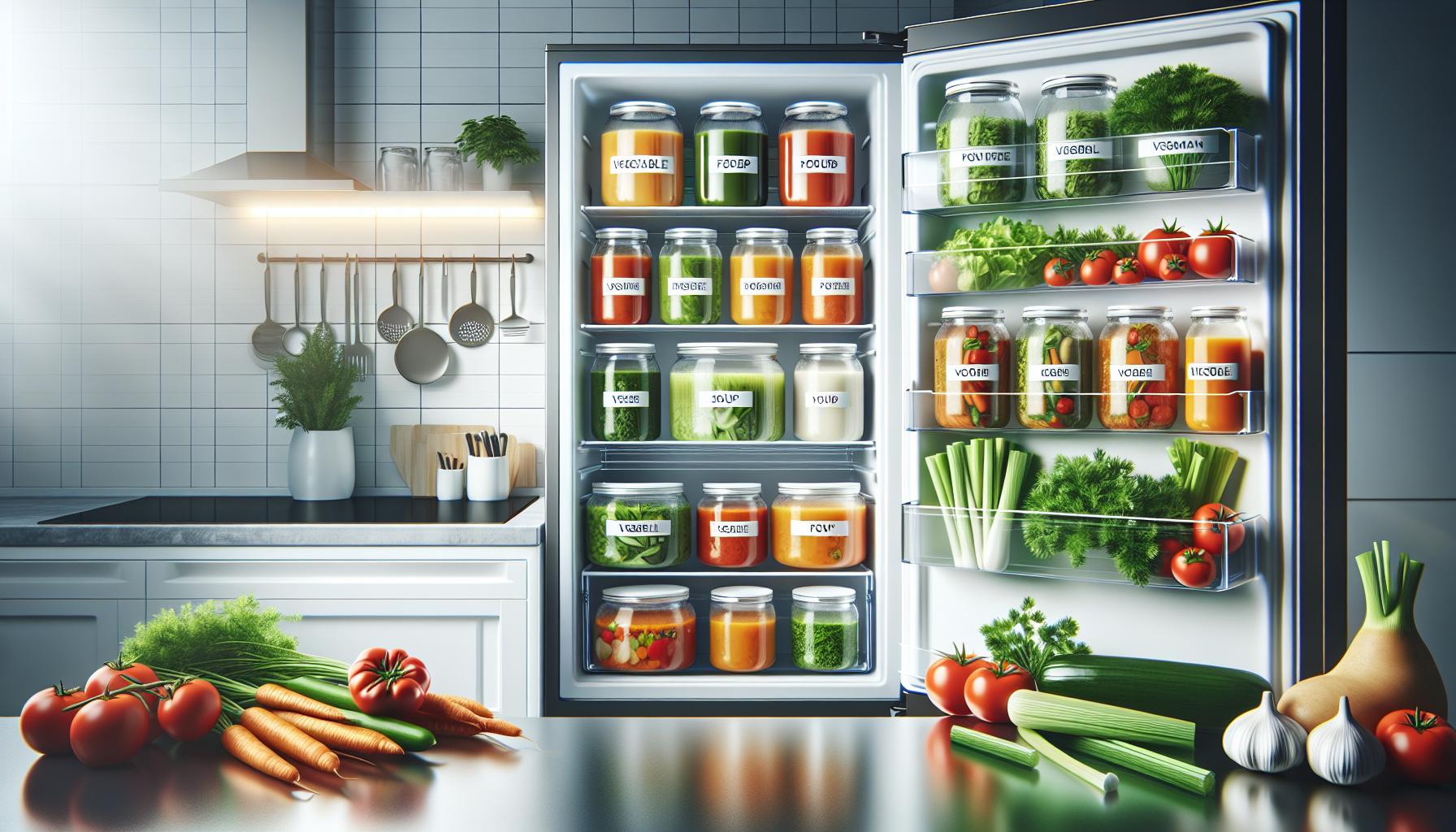
How Long Can Vegetable Soup Last in the Fridge?
Vegetable soup is a nourishing and versatile dish, but knowing how long it will last in the fridge is crucial for both safety and flavor. Generally, homemade vegetable soup can be safely stored in the refrigerator for about 3 to 5 days. This timeframe helps ensure that the soup retains its quality and minimizes the risk of foodborne illness. To maximize its freshness, it’s important to cool the soup quickly after cooking and store it in airtight containers.
When storing vegetable soup, always allow it to cool to room temperature before transferring it to the fridge. Placing hot soup directly into the refrigerator can alter the overall temperature, affecting the safety of other stored items. For even greater longevity, consider portioning out the soup into smaller containers, which can cool faster and make reheating simpler.
To make the best use of your vegetable soup, mark the containers with the date they were made. This practice helps you keep track of how long the soup has been stored. If the soup has been in the fridge for more than 5 days, it’s best to err on the side of caution and discard it to avoid any risk. When properly stored, vegetable soup not only provides a healthy meal option but also allows for easy-to-reheat portions ready when you need them.
Factors Affecting Vegetable Soup Freshness
The freshness of vegetable soup can be influenced by several key factors that are essential to consider for maintaining both flavor and safety. Temperature control is one of the most critical aspects. Soup should be cooled to room temperature before refrigerating to prevent raising the internal temperature of your fridge. Ideally, this should occur within two hours after cooking. The more rapidly the soup cools, the less chance there is for bacteria to develop, which typically thrive in warm environments.
Ingredients also play a significant role in determining how long your soup will stay fresh. For instance, soups containing high-water-content vegetables like zucchini or tomatoes may spoil faster than those made with denser ingredients, such as carrots or potatoes. Additionally, the freshness of the vegetables used at the outset cannot be overlooked. Soup prepared with fresh, high-quality produce is more likely to remain palatable longer than that made with subpar ingredients.
Storage Practices
The methods used for storing the soup can drastically affect how long it remains fresh. Using airtight containers can significantly reduce exposure to air, which helps prevent oxidative deterioration and moisture loss. Moreover, portioning out the soup into smaller containers not only assists with quicker cooling but also allows for easy reheating, reducing the number of times the entire batch is exposed to room temperature.
Lastly, maintain good hygiene and cleanliness during the preparation and serving of the soup. Always use clean utensils and avoid touching the soup with unwashed hands to minimize contamination. Adhering to these practices can help ensure that your vegetable soup remains safe and enjoyable for as long as possible.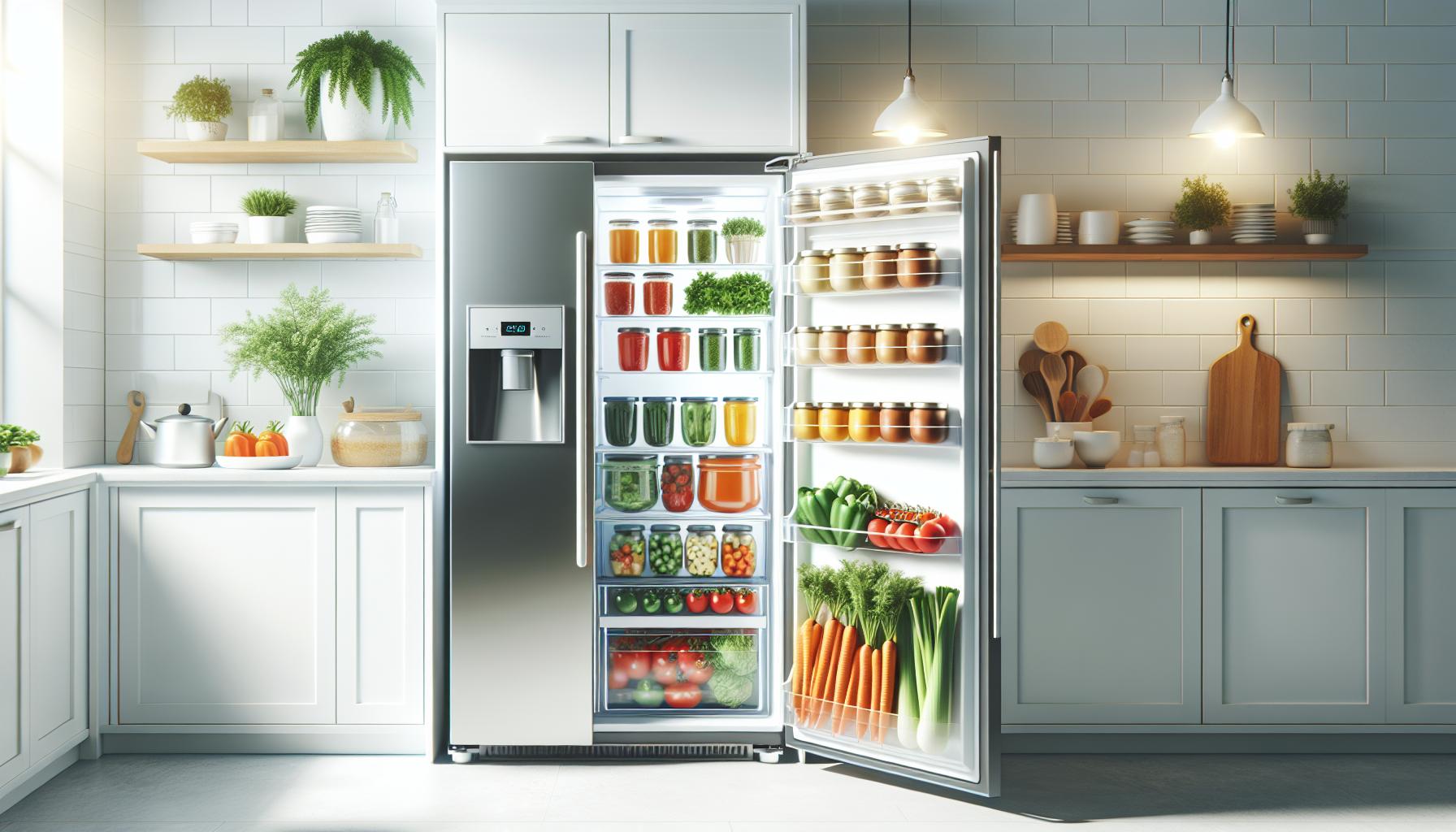
Signs Your Vegetable Soup Has Spoiled
When it comes to enjoying vegetable soup, knowing how to identify spoilage is crucial for both safety and taste. Even when stored in the fridge, vegetable soup can develop signs of spoilage, and recognizing these indicators is vital to ensuring that what you consume is safe and delicious. A faint odor that shifts from aromatic and savory to sour or off-putting is often one of the first signs that your soup may not be fit for consumption. Trust your nose; if it smells different than it did when freshly made, it’s best to err on the side of caution.
Another tangible sign to watch for is the appearance of the soup itself. If you notice any mold on the surface or inside the container, this is a definitive sign of spoilage, and the entire batch should be discarded immediately. Additionally, a change in color-particularly if browning occurs where the vegetables once appeared vibrant-can indicate that the soup has started to break down. Be sure to check the texture as well; if a slimy or overly thick consistency develops, it’s time to toss the soup.
Bubbles or a fizzy appearance on the surface are also clues you should not ignore. This effervescence can indicate fermentation, which means bacteria are present and multiplying in a way that could make you ill. To keep your soup fresh, always inspect it thoroughly before reheating or consuming and adhere to food safety guidelines: vegetable soup is typically safe for about 3 to 5 days in the refrigerator. If you have any doubts about its quality, the safest choice is to discard it. Remember, when it comes to food safety, it’s always better to be safe than sorry.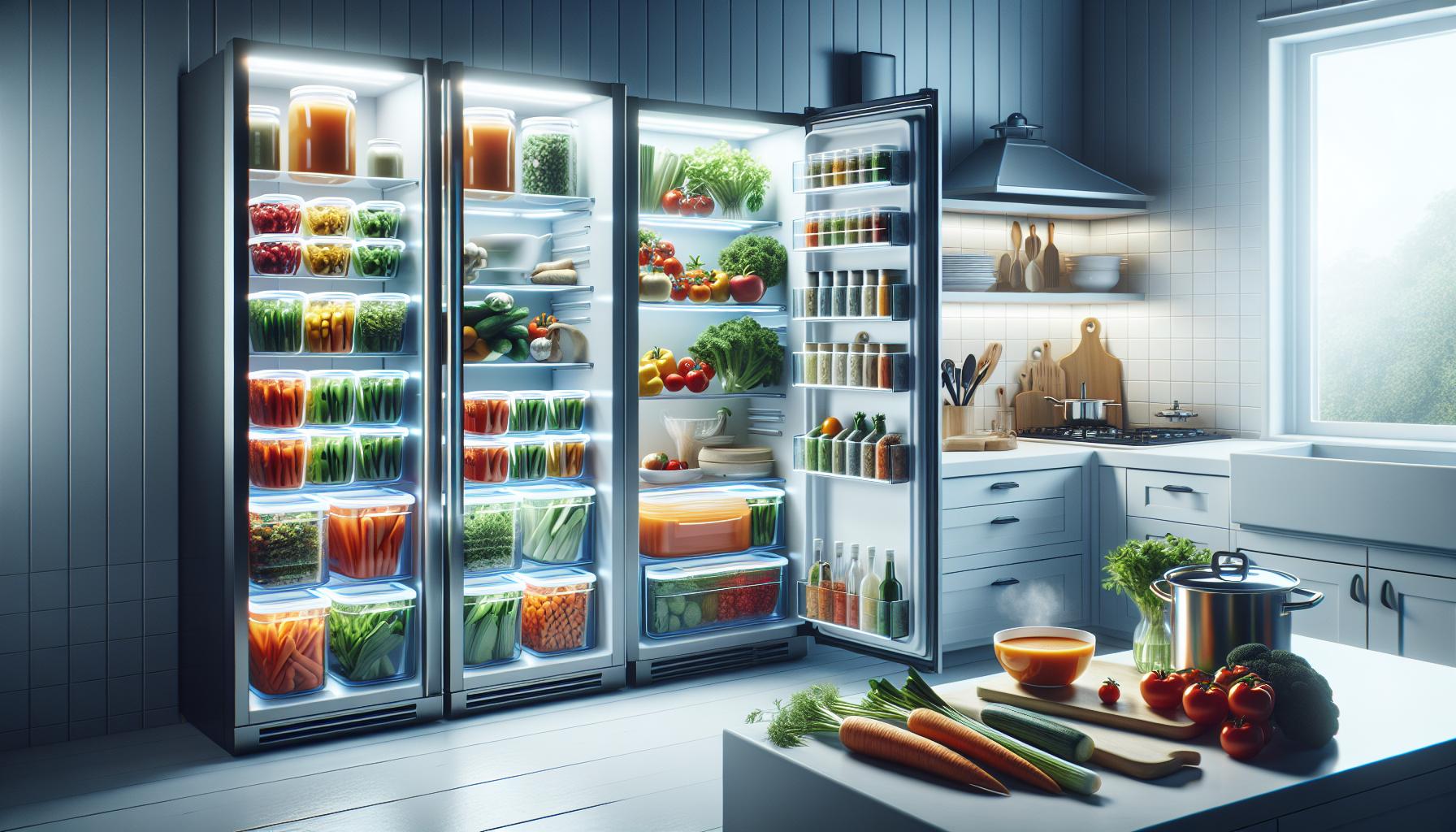
Best Practices for Storing Vegetable Soup
Storing vegetable soup properly is critical to maximizing its shelf life and retaining its flavor and nutritional value. Soup can be a nutritious cornerstone of your diet, but how you store it can significantly impact its freshness. After cooking, it’s essential to cool your vegetable soup quickly to prevent the growth of harmful bacteria. A simple method is to transfer the hot soup into shallow containers, allowing it to cool evenly and rapidly, ultimately reducing the time it spends in the temperature danger zone (between 40°F and 140°F).
Once cooled, storing the soup in airtight containers is key. Choose containers that are not only leak-proof but also appropriate for the quantity; smaller containers are advantageous as they allow for flexibility in serving sizes while minimizing the air exposure each time you open a container. It’s best to fill them to just below the rim to allow for expansion if the soup freezes. For optimal freshness in the refrigerator, vegetable soup can be kept for 3 to 5 days. Always label your containers with the date they were made to keep track of their age.
When you need to store soup longer, freezing is an excellent option. Pour the cooled soup into freezer-safe containers or heavy-duty freezer bags, removing as much air as possible to prevent freezer burn. Label each container with the date and type of soup, allowing you to quickly find what you need later on. Frozen vegetable soup can typically last for about 2 to 3 months while maintaining its quality.
A critical practice to ensure quality and safety is regular checks of your stored soup, both before using and during storage. If you see any signs of spoilage like an off odor, discoloration, or the emergence of mold, discard the soup to avoid any health risks. By following these best practices, you can enjoy your homemade vegetable soup safely and deliciously, no matter when you choose to indulge in it.
Freezing Vegetable Soup: Step-by-Step Guide
Freezing vegetable soup is a fantastic way to preserve its flavor and nutritional value for future meals. With the right steps, you can enjoy your favorite homemade creations long after they’ve been made. Proper freezing prevents the growth of bacteria and ensures that your soup maintains its taste and texture. Here’s how to do it effectively.
Start by allowing your vegetable soup to cool completely at room temperature for no more than two hours to minimize bacterial growth. Once cooled, the soup should be portioned out into freezer-safe containers or heavy-duty freezer bags. If using bags, lay them flat in the freezer to save space and allow for quicker thawing. It’s important to remove excess air from the bags to prevent freezer burn – one method is to use a straw to suck out air before sealing the bag. For containers, leave about an inch of space at the top to allow for expansion during freezing.
Label each container or bag with the date and type of soup, which helps in keeping track of freshness. Vegetable soup can generally be stored in the freezer for up to three months while retaining optimal quality. However, it remains safe to eat beyond this period if properly stored, though the flavor and texture may degrade over time.
When you’re ready to enjoy your frozen soup, thaw it in the refrigerator overnight for best results. If you’re short on time, seek to defrost the soup in the microwave or place the sealed bag in a bowl of cold water. Once thawed, reheat the soup gently on the stove or in the microwave until it reaches a safe temperature of 165°F (74°C). Stir well to ensure even heating, and always check for any off smells or changes in appearance before serving. Following these guidelines ensures your vegetable soup is not only safe to eat but also deliciously satisfying, meal after meal.
Reheating Vegetable Soup Safely and Effectively
Reheating vegetable soup can be a quick and straightforward process, but it’s essential to do it safely to maintain both flavor and integrity. One might be surprised to learn that soups, particularly with vegetable ingredients, can be deliciously revitalized even after sitting in the fridge for several days. Remember, properly reheating not only improves taste but is also critical for food safety, ensuring any potential bacteria are effectively eliminated.
To begin, always check your soup for freshness before reheating. If you notice any odd odors, changes in color, or an unusual texture, it’s best to err on the side of caution and discard it. For vegetable soup that passes these checks, follow these steps for safe reheating:
- Stovetop Method: Pour the soup into a saucepan and warm it over medium heat. Stir occasionally to promote even heating. Use a kitchen thermometer to ensure the soup reaches a temperature of 165°F (74°C).
- Microwave Method: Pour the soup into a microwave-safe bowl, covering it loosely to avoid splatters while allowing steam to escape. Heat in one-minute intervals, stirring in between until thoroughly heated to 165°F (74°C).
It’s crucial not to reheat vegetable soup multiple times or allow it to sit at room temperature for long periods, as this can increase the risk of foodborne illness. If you only need a portion of the soup, consider reheating just the amount you plan to consume rather than the entire batch.
Lastly, if you’ve got more soup than you can use within a few days, freezing it right after you make it will help maintain the flavor and nutrients. When you’re ready to use it, the previously mentioned thawing methods can ensure the best results. Proper storage and reheating will keep your vegetable soup as flavorful and nutritious as the day it was made, ready to be enjoyed again.
How to Extend the Shelf Life of Vegetable Soup
To ensure your vegetable soup lasts as long as possible in the fridge, it’s essential to prioritize proper storage techniques and be mindful of the ingredients used. Homemade vegetable soup can typically last about 3 to 4 days in the refrigerator when stored correctly, but by following certain strategies, you can extend its freshness and safety even further.
Optimal Cooling and Storage Techniques
After cooking, allow the soup to cool at room temperature for no more than two hours before refrigerating. Rapid cooling is key, so consider transferring the soup to shallow containers to increase the surface area, helping it to cool quickly. Once cooled, store the soup in airtight containers or tightly sealed jars. This prevents air exposure, which can lead to spoilage.
Understanding Ingredients Impact on Shelf Life
Be aware that the ingredients can affect the longevity of your soup. For instance, soups with dairy, meat, or seafood tend to spoil faster than vegetarian soups filled with just vegetables and grains. If you’re working with ingredients that have a shorter shelf life, such as fresh herbs or certain vegetables like broccoli, it may be wise to consume the soup sooner or consider freezing it for longer storage.
Freezing for Longevity
If you know you won’t finish your vegetable soup within the week, freezing is an excellent option to extend its shelf life. Vegetable soup can be safely stored in the freezer for about 2 to 3 months. To do this, let the soup cool, then transfer it to freezer-safe containers, leaving some space at the top for expansion as it freezes. Once sealed, label the containers with the date to keep track of freshness. When you’re ready to enjoy it again, thaw the soup in the refrigerator overnight before reheating.
By applying these best practices for cooling, storing, and recognizing the role of ingredients, you can effectively extend the shelf life of your vegetable soup, ensuring that it remains safe and delicious for your future meals.
Storage Containers: Choosing the Right Type
Choosing the right storage containers for your vegetable soup can significantly impact its lifespan and quality. Not all containers are created equal, and using the appropriate type can help preserve flavors, prevent contamination, and ensure safety. When selecting storage options, consider materials that facilitate airtight seals to minimize exposure to air and moisture, both of which can accelerate spoilage.
Material Matters
Look for containers made from glass or BPA-free plastic, as these materials are durable and provide excellent sealing capabilities. Glass containers are particularly favorable as they are non-reactive, meaning they won’t leach chemicals into your food, and they allow you to monitor the contents easily. Additionally, glass is microwavable, which can facilitate reheating directly without needing to transfer the soup to another vessel. Always choose containers with tight-fitting lids to create an airtight seal, keeping your soup fresher for longer.
Size and Shape Considerations
The size and shape of the containers are essential as well. Opt for shallow, wide containers to maximize cooling efficiency and minimize the time the soup remains in the temperature danger zone (40°F – 140°F). This step is crucial, as rapid cooling can significantly reduce the risk of bacterial growth. When portioning the soup, consider using multiple smaller containers instead of one large one, as this will not only cool the soup faster but also make reheating easier without freezing the whole batch.
Freezer-Safe Options
If you plan to store your vegetable soup for an extended period, ensure your containers are freezer-safe. When filling containers, leave at least an inch of space at the top to allow for expansion as the soup freezes. This helps avoid cracked containers or compromised seals that can lead to freezer burn. Labeling each container with the date of storage will assist in ensuring that you consume the soup within the recommended timeframe, ideally within 2 to 3 months for frozen soups.
By carefully selecting the right storage containers, you can extend the shelf life of your vegetable soup, safeguarding its deliciousness and nutritional value for your future meals.
Nutritional Considerations for Leftover Vegetable Soup
Leftover vegetable soup is not just a convenient meal, it also offers a treasure trove of nutritional benefits that can enhance your diet. Packed with vitamins, minerals, and fiber, a bowl of vegetable soup can encourage a healthy lifestyle while minimizing food waste-a win-win situation. However, understanding how to retain these benefits during storage is crucial for maintaining the soup’s nutritional integrity.
When properly stored, vegetable soup can last in the fridge for about 3 to 4 days. To ensure you are maximizing nutrients, it’s important to cool the soup quickly after cooking and refrigerate it within two hours. Avoid leaving it out at room temperature for prolonged periods, which can lead to spoilage and diminish its nutritional value. If you’re planning to consume your soup later, freeze it within 3 days of cooking for optimal freshness and nutritional retention; it will keep well for 2 to 3 months in the freezer.
Mindful reheating is key to preserving nutrients. Rapid reheating in a microwave or stovetop can help maintain the texture and flavor, but avoid boiling since high temperatures can diminish some beneficial vitamins like vitamin C and certain B vitamins. Reheat just enough to warm the soup thoroughly, ideally to an internal temperature of 165°F (74°C). Additionally, consider adding fresh herbs or a splash of lemon juice after reheating to boost the flavor and enrich the nutrient profile of the soup.
Overall, leftovers can be just as nutritious as freshly cooked meals if handled correctly. By being mindful of how you store, reheat, and even enhance your leftover vegetable soup, you’re ensuring that each bowl remains a wholesome, nourishing option worthy of your meal rotation.
Using Leftover Soup: Creative Recipe Ideas
Leftover vegetable soup isn’t just a meal; it’s a canvas for culinary creativity. By transforming your soup into new dishes, you can elevate your dining experience while minimizing food waste. Here are some inventive and delicious ways to repurpose your vegetable soup.
One great idea is to use vegetable soup as a base for risotto. Simply replace the stock or water in your risotto recipe with the leftover soup. This adds flavor and nutrition, making the dish more robust and satisfying. For added texture and richness, incorporate some cooked grains like quinoa or farro, along with a sprinkle of Parmesan cheese and fresh herbs.
Another exciting option is to create a hearty vegetable stew. Start by sautéing aromatic vegetables like onions and garlic in a pot, then add your soup along with some extra seasonal vegetables and a protein of your choice, such as diced chicken or beans. Let it simmer until everything is heated through and the flavors meld together. Serve with crusty bread for a filling meal!
For those who enjoy a bit of spice, consider turning your vegetable soup into a flavorful curry. Heat some oil in a pan, add curry powder or paste, and toast for a minute before pouring in your soup. Add coconut milk for creaminess and toss in additional veggies like bell peppers or peas. Serve it over rice or with naan for a satisfying dish that bursts with flavor.
Lastly, you can blend the soup into a smooth puree to create a delicious dip. Just blend the soup until creamy, adjusting the consistency as desired with a bit of cream or yogurt. Serve it alongside your favorite crackers or fresh vegetables for a nutritious snack or appetizer.
By thinking outside the box, you can breathe new life into leftover vegetable soup, transforming it into a variety of delectable dishes that are both nutritious and satisfying.
Frequently asked questions
Q: How can I tell if my vegetable soup is still good to eat?
A: To determine if vegetable soup is still safe to eat, check for off odors, discoloration, or mold. If your soup has an unusual smell or appearance, it’s best to discard it. Additionally, always follow the recommended storage time-typically 3 to 5 days in the fridge for best safety.
Q: Can I store vegetable soup in glass containers?
A: Yes, glass containers are excellent for storing vegetable soup. They are non-reactive, easy to clean, and can withstand freezing temperatures. Ensure the container has a tight seal to keep out air and moisture, enhancing the soup’s freshness.
Q: Is it safe to reheat vegetable soup multiple times?
A: It is generally safe to reheat vegetable soup, but limit the reheating to once to preserve flavor and safety. Always reheat thoroughly to an internal temperature of 165°F (74°C) to kill any potential bacteria.
Q: What’s the best way to freeze vegetable soup?
A: To freeze vegetable soup, allow it to cool completely, then transfer it to airtight containers or freezer bags. Leave some extra space for expansion. Label with the date and consume within 3 months for the best quality.
Q: How can I improve the flavor of leftover vegetable soup?
A: Enhance leftover vegetable soup by adding fresh herbs, spices, or a splash of citrus juice when reheating. Consider incorporating cooked grains or proteins for a more filling dish. This adds freshness and helps to revitalize flavors.
Q: Can I use expired vegetable broth in my soup?
A: Using expired vegetable broth in soup is not recommended. Always check the broth for signs of spoilage, such as off smells or changes in appearance, as expired broth can compromise the overall flavor and safety of your soup.
Q: Why does vegetable soup taste bland after being stored?
A: Vegetable soup can taste bland after storage due to ingredient degradation over time. To restore flavor, add fresh herbs, a pinch of salt, or a dash of vinegar when reheating. This can enhance the taste and make it more palatable.
Q: How long can vegetable soup sit out before it becomes unsafe?
A: Vegetable soup should not sit out at room temperature for more than 2 hours. If the temperature exceeds 90°F (32°C), reduce that time to just 1 hour. Always refrigerate leftovers promptly to ensure food safety.
In Conclusion
Now that you know how long vegetable soup lasts in the fridge and the best storage practices, it’s time to apply this knowledge! Proper storage can maximize freshness and reduce food waste, giving you peace of mind in your kitchen. If you have any lingering questions about food safety or need tips on freezing soup for longer shelf life, check out our articles on safe food storage and delicious soup recipes.
Don’t hesitate to share this guide with friends who love cooking or drop a comment below with your favorite vegetable soup variations! For even more insightful tips, consider subscribing to our newsletter for updates on healthy storage solutions and recipe inspirations. Empower yourself to make informed decisions and get the most out of your home-cooked meals-start exploring our resources today!


